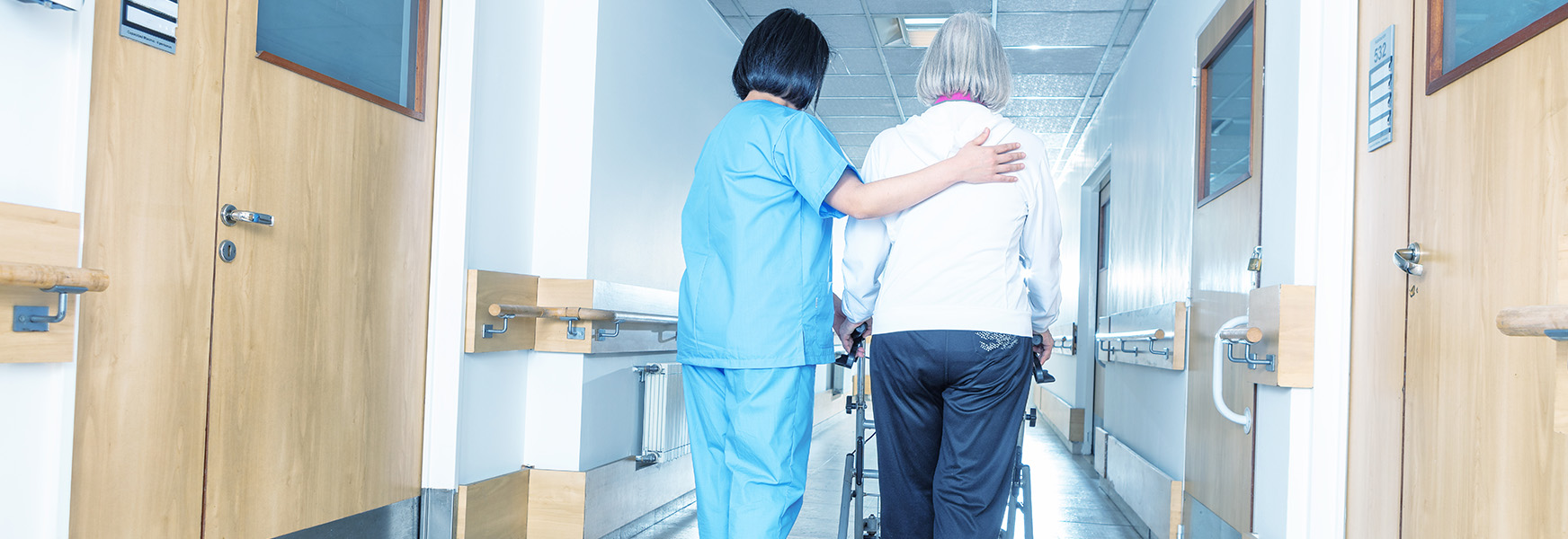Haste Not Helpful When Helping a Fallen Patient

OSHA’s Safe Patient Handling program guide notes that healthcare workers experience higher rates of occupational injuries than many other industries, including construction and manufacturing, and that nearly half of all nursing injuries are musculoskeletal disorders (MSDs), described as pain in the muscles, nerves, and tendons sustained from actions related to patient care such as lifting someone from the floor.
In the world of patient care, we know there is no safe manual lift from the floor after someone has fallen. But what do you do when someone falls? How do you help them? How do you avoid injury to the patient and the caregiver?
The best way is the hardest: You have to let them stay where they are until an assessment of their status is done. That tends to go against instinct. Most of us want to pick up someone if they have fallen down. But whether you’re at the grocery store, at work, or even in your own home, you should evaluate the fallen person for injuries first, so you don’t hurt them or yourself.
Communication with the fallen person is key. The first thing to do is to ask them: “Are you alright? Do you have any pain?”
The patient response determines the next steps. If someone is unable to clearly respond to your question, call for help immediately. Time is essential in the instance of altered mental status changes. Keep them in the same position on the ground and wait for EMS to arrive.
If the person can clearly answer you about their status after a fall, move forward with fall recovery, but only if no injuries have been identified by a medical professional.
The best scenario is to talk with and coach the fallen patient to use a chair and get themselves up without any physical assistance from staff. If they cannot stand, a caregiver will need to assist. The safest option, for both patient and caregiver, is to use a mechanical lift aid. This may be a good time to check that your full body lifts lower close enough to the floor to complete this task.
If the fall occurs in a tight area, clear the area for a transfer lift to be brought in. If, however, the area is not accessible by a mechanical lift aid, use a draw sheet or slip sheet to slide the patient to a lift-accessible area to allow use safe lifting equipment.
If no mechanical lift is available in your facility, consider an alternative floor recovery device. MEMIC offers information for aid free assistive devices to help with the fall recovery.
Obviously, the best fall recovery is prevention. Caregivers should regularly assess transfer mobility status, communicate changes in physical abilities, and determine safe patient handling equipment device needs.
If, and when, a fall occurs, we must refrain from lifting patients ourselves. Careful planning will ensure that the right procedures, equipment and training are in place to avoid injury.
MEMIC policyholders have access to Patient Floor Recovery Transfer Drill training and Senior Living Resident Fall Recovery information on the Safety Director. In person training from our safety consultants may also be available to our healthcare policyholders to teach caregivers the proper steps for safe recovery from a fall to the floor.

